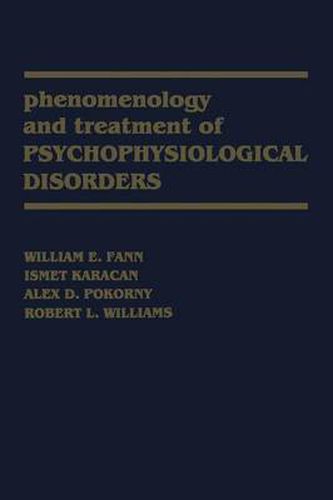Readings Newsletter
Become a Readings Member to make your shopping experience even easier.
Sign in or sign up for free!
You’re not far away from qualifying for FREE standard shipping within Australia
You’ve qualified for FREE standard shipping within Australia
The cart is loading…






This title is printed to order. This book may have been self-published. If so, we cannot guarantee the quality of the content. In the main most books will have gone through the editing process however some may not. We therefore suggest that you be aware of this before ordering this book. If in doubt check either the author or publisher’s details as we are unable to accept any returns unless they are faulty. Please contact us if you have any questions.
The interrelationships between somatic and psychiatric complaints involve virtually every major organ system and every psychiatric diagnostic category. Psychiatric distress frequently finds expression in physical ailment or pain, and chronic physical illness or disability is a common exacerbant of psychiatric symptoms. The complexity of the interplay between psychological and physiological disease is profound, and many of the mechanisms involved remain undefined or imperfectly understood. Our intention in assembling this volume, the fifth in the Baylor Psychiatry Series, has been to consolidate the most recent medical and psychiatric opinion on the description and treatment of psychophysiological disorders. We have included reviews and new material on disorders long understood to be in the psychophysiological realm, such as gastrointestinal disease, pulmonary reactions, headache, and hypertension. Additionally, there are contributions on conditions less frequently, but no less clearly, recognized as psychophysiological or psychosomatic, including immune response deficits, epilepsy, stuttering, and sleep disorders. Chapters on Couvade syndrome, menstrually related mood disturbance, obesity, keratoconus, and anorexia nervosa examine the degree to which psychological and physical events interact in conditions usually considered attributable essentially to a single system. Drs. Dowling and Gaitz have written excellent reviews of developmental elements in psychophysiological events, and examine such disorders as they are specific to the very young or the very old. Treatment approaches to the variety of disorders are discussed in chapters by Dr. Decker, who describes multifaceted modalities, Dr. Lomax, who examines psychotherapeutic techniques, and in a final chapter on psychopharmacological mitigation of psychophysiological syndromes.
$9.00 standard shipping within Australia
FREE standard shipping within Australia for orders over $100.00
Express & International shipping calculated at checkout
This title is printed to order. This book may have been self-published. If so, we cannot guarantee the quality of the content. In the main most books will have gone through the editing process however some may not. We therefore suggest that you be aware of this before ordering this book. If in doubt check either the author or publisher’s details as we are unable to accept any returns unless they are faulty. Please contact us if you have any questions.
The interrelationships between somatic and psychiatric complaints involve virtually every major organ system and every psychiatric diagnostic category. Psychiatric distress frequently finds expression in physical ailment or pain, and chronic physical illness or disability is a common exacerbant of psychiatric symptoms. The complexity of the interplay between psychological and physiological disease is profound, and many of the mechanisms involved remain undefined or imperfectly understood. Our intention in assembling this volume, the fifth in the Baylor Psychiatry Series, has been to consolidate the most recent medical and psychiatric opinion on the description and treatment of psychophysiological disorders. We have included reviews and new material on disorders long understood to be in the psychophysiological realm, such as gastrointestinal disease, pulmonary reactions, headache, and hypertension. Additionally, there are contributions on conditions less frequently, but no less clearly, recognized as psychophysiological or psychosomatic, including immune response deficits, epilepsy, stuttering, and sleep disorders. Chapters on Couvade syndrome, menstrually related mood disturbance, obesity, keratoconus, and anorexia nervosa examine the degree to which psychological and physical events interact in conditions usually considered attributable essentially to a single system. Drs. Dowling and Gaitz have written excellent reviews of developmental elements in psychophysiological events, and examine such disorders as they are specific to the very young or the very old. Treatment approaches to the variety of disorders are discussed in chapters by Dr. Decker, who describes multifaceted modalities, Dr. Lomax, who examines psychotherapeutic techniques, and in a final chapter on psychopharmacological mitigation of psychophysiological syndromes.